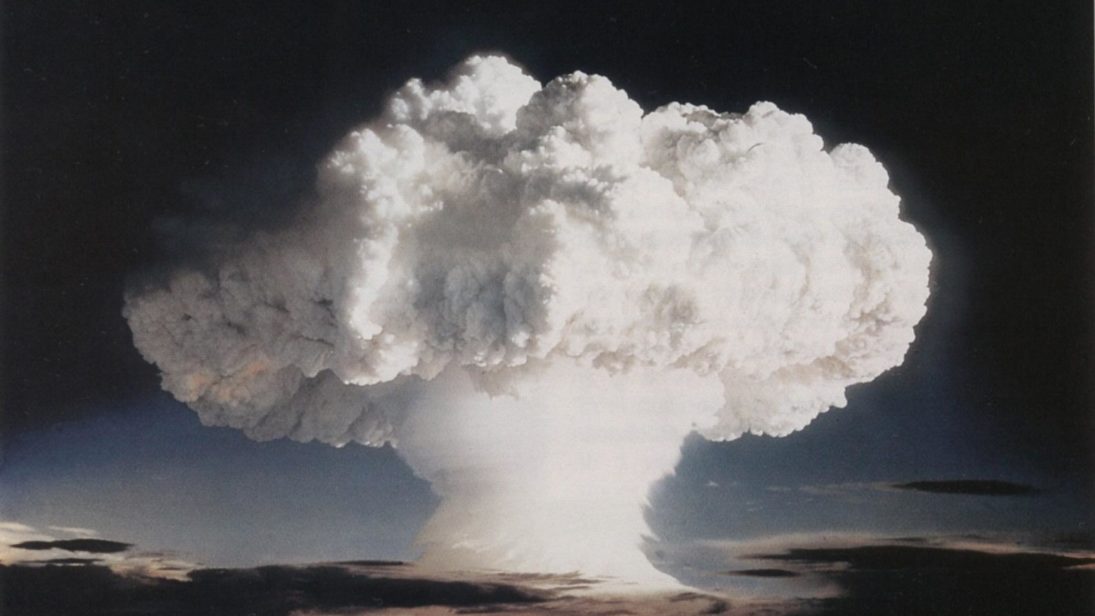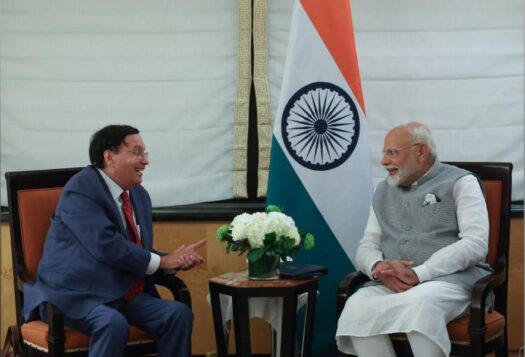
Why did India and Pakistan test nuclear weapons in May 1998, and how did the United States and the international community respond? This SAV Explainer pieces together the details, aided by expert analysis from practitioners and scholars on Strategic Learning.
What were the circumstances of the May 1998 nuclear tests carried out by India and Pakistan?
On May 11 and 13th, 1998, months after electing a Bharatiya Janata Party (BJP) government led by Atal Bihari Vajpayee, India conducted five nuclear tests in the Thar desert of Rajasthan. After a seventeen-day period of decisionmaking, Pakistan conducted five simultaneous nuclear explosions in western Balochistan on May 28, 1998, and a sixth test two days later at an underground test site known as Kharan.
India’s motivation for the 1998 tests was outlined by Prime Minister Vajpayee in a letter to President Bill Clinton, where he cited a “deteriorating security environment” given the threat of a nuclear-armed China and the “covert nuclear weapons state” of Pakistan. Through the 1998 nuclear explosions, India crossed the overt nuclear threshold to become the sixth nuclear-armed country in the world, while Pakistan became the seventh. India had tested a nuclear device once before in 1974, labeling it a “peaceful nuclear explosion,” which was widely condemned and led to the creation of the Nuclear Suppliers Group.
How did the United States attempt to prevent Pakistan from testing nuclear devices after India’s nuclear tests?
According to General Anthony Zinni, a former U.S. Central Command (CENTCOM) commander, after India conducted its tests, the United States immediately went to meet with the Pakistani prime minister and many members of the cabinet to urge Pakistan to refrain from conducting nuclear tests in response to India. Zinni asserts that the trip was a “mission impossible,” as there was little the United States could do to persuade Pakistan into believing it was not in its own strategic interest to test nuclear devices in response to India.
Why did Pakistan respond to India’s nuclear test with its own tests two weeks later?
Feroz Khan, a research professor at the Naval Postgraduate School, argues that though Pakistan knew that it would be faced with economic sanctions if it were to conduct nuclear tests, the Pakistan Army and Foreign Office had decided after India’s tests that Pakistan would have no choice but to do so, or Pakistan’s security would be compromised.
What were U.S. priorities after India and Pakistan had each tested nuclear devices?
According to Robert Einhorn, the deputy assistant secretary of state for political-military affairs at the time of the tests, the United States sought to ensure that India and Pakistan would comply with a regime of “strategic restraint” to avoid a nuclear arms competition in South Asia and the undermining of nonproliferation in other areas of the world. As part of this framework, the United States urged India and Pakistan to join the Comprehensive Nuclear Test-Ban Treaty (CTBT), to refrain from the production of fissile material of nuclear weapons, to avoid producing or testing long-range ballistic missiles, and to be responsible in the export of fissile materials and missile technology.
To pursue these measures of strategic restraint, Strobe Talbott, who was deputy secretary of state at the time, was tasked by President Clinton to initiate strategic dialogues with India and Pakistan. There was a series of bilateral engagements with both India and Pakistan for sixteen months.
What did U.S. sanctions on India and Pakistan look like after the 1998 nuclear tests?
The Glenn Amendment, passed in 1977, required the United States to invoke economic sanctions, on any country that detonated a nuclear device. Economic sanctions under the Glenn Amendment included the suspension of foreign and military assistance as well as restricted access to assistance from international financial institutions. The Clinton Administration imposed Glenn Amendment sanctions on India over the course of several weeks following its May 1998 tests. The United States imposed Glenn Amendment-related sanctions on Pakistan after it tested nuclear devices in late May 1998. Canada, Germany, and Japan joined the United States in cutting bilateral aid to India and Pakistan. At the time of its nuclear tests, Pakistan was already under U.S. sanctions under the 1976 Symington and 1985 Pressler Amendments. According to Rabia Akhtar, a Pakistani academic who studies U.S.-Pakistan relations, by October 1998, the sanctions regime against India and Pakistan had been drastically weakened, as the Clinton administration offered relief packages to both countries to persuade them to avoid nuclear-arms competition and the U.S. Congress voted to exempt food exports from sanctions.
How did the United States engage with India and Pakistan post-1998?
Though the United States pressed India to sign the CTBT and adopt other policies of strategic restraint, India was content with waiting for the United States and other powers to turn their attention elsewhere and for its international isolation to fade. After fourteen rounds of talks in less than two years, there was a deepened sense of trust between the United States and India, according to Rakesh Sood, a former Indian diplomat who was involved in the post-nuclear test strategic dialogues with the United States.
Within eight months of the nuclear tests, Pakistan, under General Pervez Musharraf, infiltrated military units into the Kargil sector of Indian-administered Kashmir. In May 1999, when these units were discovered, any negotiations towards the signing of the CTBT took a back seat to U.S. crisis management efforts to prevent a nuclear war over Kashmir. After 9/11, the United States’ strategic priorities in South Asia shifted, as it sought Pakistani help to fight the “war on terror.” As a result, any remaining sanctions were lifted in September 2001.
To access more expert analysis on nuclear issues in South Asia, enroll in Stimson’s free, open online course—”Nuclear South Asia: A Guide to India, Pakistan, and the Bomb”—at www.nuclearlearning.org.
***
Image: The Official CTBTO Photostream via Flickr
Editor’s Note: To read this article in Urdu, please click here.


